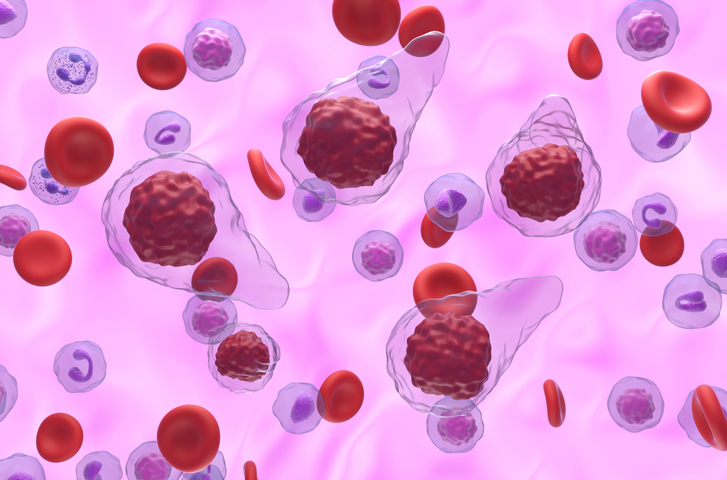
No significant differences in hematopoietic stem cell transplantation (HSCT) outcomes were observed between haploidentical donors and matched unrelated donors (MUDs) in a recent study published in Blood Advances, though matched sibling donors (MSDs) remain the superior donor choice due to higher engraftment.
Using registry data from the Center for International Blood and Marrow Transplant Research, Tania Jain, MBBS, of Johns Hopkins University, and colleagues prospectively studied 1,032 patients with chronic-phase myelofibrosis (MF) who received peripheral blood grafts from 2013 to 2019.
The primary outcome was overall survival (OS). Secondary outcomes included engraftment, nonrelapse mortality (NRM), acute and chronic graft-versus-host disease (GVHD), relapse, and disease-free survival (DFS). The median follow-up was 46.5 months.
In the first three months, MSDs were associated with superior OS compared with MUDs (hazard ratio [HR], 4.48 [95% CI, 2.25-8.92]), haploidentical donors (HR, 5.80 [95% CI, 2.52-13.35]), and mismatched unrelated donors (MMUDs; HR, 5.24 [95% CI, 1.49-18.42]; P<.001). Beyond three months, there were no significant differences in OS across donor types.
MSDs were also associated with significantly lower incidence of graft failure compared with haploidentical donors (HR, 6.11 [95% CI, 2.98-12.54]; P<.001) and MUDs (HR, 2.33 [95% CI, 1.20-4.51]; P=.01), but were not significantly different compared with MMUDs (HR, 1.82 [95% CI, 0.58-5.72]; P=.30). Graft failure was also associated with more advanced disease, and additional prospective studies are needed to reduce graft failure risk in MF, the authors noted.
MMUDs were independently associated with higher acute grade 3-4 GVHD compared with MSDs (HR, reference), haploidentical donors (HR, 0.64 [95% CI, 0.38-1.09]), MUDs (HR, 0.78 [95% CI, 0.57-1.06]), and MMUDs (HR, 1.40 [95% CI, 0.83-2.35]; P=.04). However, there were no significant differences in chronic GVHD among donor types.
MSDs were associated with significantly lower NRM compared with haploidentical donors (HR, 1.71 [95% CI, 1.09-2.68]), MUDs (HR, 1.58 [95% CI, 1.14-2.18]), and MMUDs (HR, 1.71 [95% CI 0.98-2.97]; P=.03).
There were no differences in relapse or DFS by donor type.
“Our study…demonstrates a significant trend in reducing the survival gap when using mismatched donors and establishes [haploidentical HSCT] with [post-transplantation cyclophosphamide] as an acceptable approach in patients with MF in need of an allograft,” the researchers wrote. “These findings advocate for an approach of donor selection emphasizing timely HSCT without necessitating exclusive prioritization of fully matched donors.”
Reference
Jain T, Estrada-Merly N, Salas MQ, et al. Donor types and outcomes of transplantation in myelofibrosis: a CIBMTR study. Blood Adv. 2024. doi:10.1182/bloodadvances.2024013451






 © 2025 Mashup Media, LLC, a Formedics Property. All Rights Reserved.
© 2025 Mashup Media, LLC, a Formedics Property. All Rights Reserved.